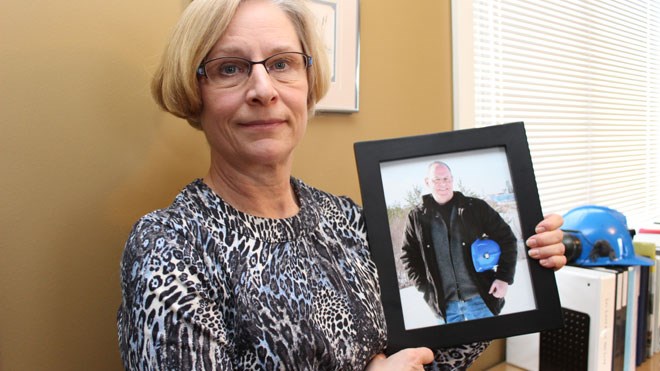John Vary, a former mining engineer with Falconbridge, was diagnosed with amyotrophic lateral sclerosis (ALS) in June 2011.
Twenty-three months later, in January 2013, he died of the degenerative disease, which first took away the fine motor skills in his hands and later his ability to talk, and finally, breathe.
When his condition worsened, John's wife, Lauren Vary, began to take to heart advice from a close friend, Marilyn.
“Prepare for the worst, hope for the best, while living life to the fullest,” she said she was told.
Marilyn gave that advice not long after her daughter died of bone cancer. Before her passing though, Marilyn was pushed head first into a complex system of end-of-life care without the benefit of early planning.
The Varys decided to dust of their bucket list and travelled while John could still get out of bed.
In July 2011, they started an 11-week road trip to the West Coast and down to Arizona, where John's mother owned a trailer.
Even though his condition and mobility worsened, John and Lauren went on a second trip in 2012 to Scotland, where John's ancestors were from.
This time two of their adult children were able to join them. They visited John's ancestral village, where he was able to get up out of his wheelchair for short distances.
“Whatever you might be planning to do five or 10 years down the road, do it sooner,” Lauren told Northern Life.
After they returned, John's condition rapidly deteriorated. Following Marilyn's advice, Lauren contacted the North East Community Care Access Centre (CCAC) to help her with John's care.
The CCAC set the couple up with a social worker, who helped them navigate the paper work they would need to fill out — for handicap parking, for specialized equipment, for formalizing John's wishes not to be resuscitated.
The social worker also connected the Varys with grief counselling, to help them prepare for John's eventual death.
In his last couple months of life, when it became too difficult for Lauren to care for John on her own, the CCAC referred them to a personal support worker (PSW) agency.
Based on that experience, Lauren echoed the litany of complaints made by others who have had to seek homecare services in the city.
“We had a revolving door of PSWs,” Lauren said.
In two and a half months, 22 PSWs visited their home. Lauren said this “revolving door” provided no consistency. Each time a new PSW came by, she had to re-explain the layout of their home and John's needs.
On one particularly bad day, Lauren said three different PSWs showed up.
On another day, a PSW showed up at her front door with a cold. She told Lauren she tried to call in sick, but was told to work anyway.
“I didn't let her past the door,” Lauren told Northern Life. “If John would have caught a respiratory infection, it would have killed him.”
Lauren blamed low pay and lack of full-time hours for trouble the couple experienced.
“You could see the agency didn't understand the changing needs of someone with ALS,” Lauren said.
While she had difficulties dealing with the PSW agency, Lauren said the care John received from Maison Vale Hospice's new outreach program turned out to be excellent.
The pilot program started on May 1, 2013, and according to Elaine Klym, a registered nurse, and the program's director, it is set to become a permanent fixture with the institution.
“With Lauren and John, it was about talking about what to expect,” Klym said.
The program includes a registered nurse, a nurse practitioner and a physician in a supporting role.
Lauren said Klym's care and advice allowed John to die at home.
She recommended medication to help control his anxiety and reduce the amount of saliva he produced, so Lauren would not have to use a suction device as frequently.
“It was so helpful,” Lauren said. “It made all the difference in the world to stay at home.”
@jmigneault
Join Sudbury.com+
- Messages
- Post a Listing
- Your Listings
- Your Profile
- Your Subscriptions
- Your Likes
- Your Business
- Support Local News
- Payment History
Sudbury.com+ members
Already a +member?
Not a +member?
Sign up for a Sudbury.com+ account for instant access to upcoming contests, local offers, auctions and so much more.
